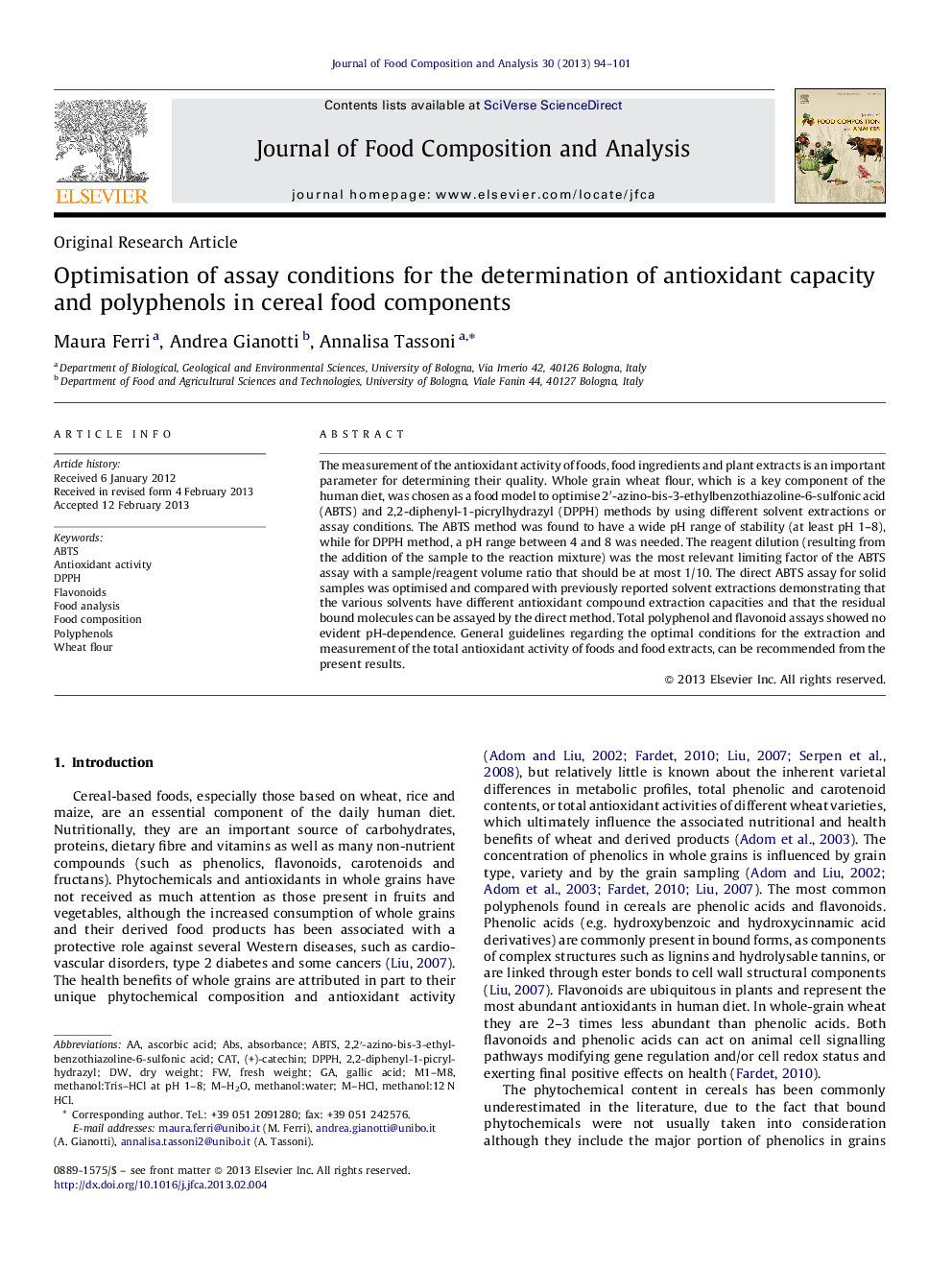| Article ID | Journal | Published Year | Pages | File Type |
|---|---|---|---|---|
| 7620814 | Journal of Food Composition and Analysis | 2013 | 8 Pages |
Abstract
The measurement of the antioxidant activity of foods, food ingredients and plant extracts is an important parameter for determining their quality. Whole grain wheat flour, which is a key component of the human diet, was chosen as a food model to optimise 2â²-azino-bis-3-ethylbenzothiazoline-6-sulfonic acid (ABTS) and 2,2-diphenyl-1-picrylhydrazyl (DPPH) methods by using different solvent extractions or assay conditions. The ABTS method was found to have a wide pH range of stability (at least pH 1-8), while for DPPH method, a pH range between 4 and 8 was needed. The reagent dilution (resulting from the addition of the sample to the reaction mixture) was the most relevant limiting factor of the ABTS assay with a sample/reagent volume ratio that should be at most 1/10. The direct ABTS assay for solid samples was optimised and compared with previously reported solvent extractions demonstrating that the various solvents have different antioxidant compound extraction capacities and that the residual bound molecules can be assayed by the direct method. Total polyphenol and flavonoid assays showed no evident pH-dependence. General guidelines regarding the optimal conditions for the extraction and measurement of the total antioxidant activity of foods and food extracts, can be recommended from the present results.
Keywords
Related Topics
Physical Sciences and Engineering
Chemistry
Analytical Chemistry
Authors
Maura Ferri, Andrea Gianotti, Annalisa Tassoni,
